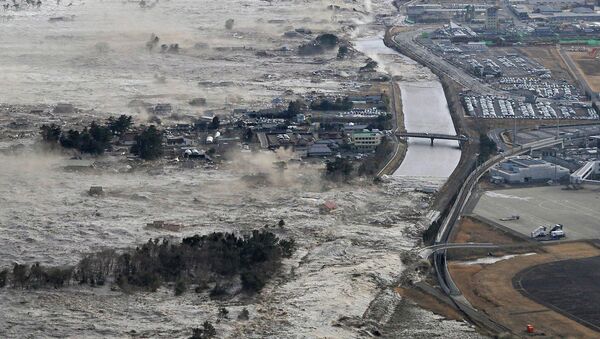The Asia-Pacific region is most affected by natural disasters due to its unique geological location – the Ring of Fire – and its huge concentrated population, Martin Lasater, a Senior Research Analyst at Energetics Incorporated and author of several books on Sino-American strategic relations, underscored.
"From Krakatoa in 1883, to the Tohoku earthquake in 2011, and Super Typhoon Haiyan in 2013, the Asia-Pacific has experienced some of the most devastating natural phenomena on record. By 2025, Asia will be home to 21 of the world's 37 global megacities, making multi-billion dollar disasters even more common," Martin Lasater warned.
Citing a 2013 World Bank report, the expert pointed out that the total loss due to Asia-Pacific disasters accounts to almost 61 percent of global losses from natural disasters in the last 20 years.
So far, the governments of the region should be prepared to invest more in disaster risk management and resilience.
Geoscience Australia's natural hazard risk assessment 2008 report pointed out several areas regarded as the most vulnerable to heavy damage: particularly, the Marikina Valley fault in the Philippines, Dhaka in Bangladesh and Beijing in China.
Indonesia, Papua New Guinea and Myanmar as well as Vanuatu and Tonga, could also be severely affected by unexpected cataclysms.
The point is that a large part of the Asia-Pacific region is located "on the tectonic plate boundary between the Australasian and Indian plates."
The Ring of Fire, a 40,000-kilometer "horseshoe," is home to 75 percent of the world's active and dormant volcanoes. Furthermore, approximately 90 percent of the world's earthquakes occur in the region.
Ring of Fire — Earthquakes Around the World — http://t.co/I6LUwgzPbL via @IamRegisYates #CERN #RecentEarthquakes pic.twitter.com/2jl8wJHb1I
— EOTM News Editor (@EOTMOnline) 24 апреля 2015
The "horseshoe" is in fact a string of volcanoes and sites of seismic activity, the expert emphasized. The Ring of Fire was formed by the movement and collisions of lithospheric plates and is considered a unique geological formation.
Although countries with strong humanitarian assistance and disaster relief (HA/DR) capabilities – the United States, China, Japan, and Australia – are making every effort to counter the threat, "one of the biggest gaps in Asia-Pacific HA/DR preparedness is for mega-disasters that impact several countries at the same time," Martin Lasater underscored.
Flood: most damaging natural disaster in Asia Pacific 2014 acc. to figures in UN ESCAP report: http://t.co/moXnFTqgGD pic.twitter.com/4xLc8GnxeM
— JBA Risk Management (@JBARisk) 27 февраля 2015
According to the expert only the military forces of such major powers as the United States, China, Japan, and Australia would be able to deal with such a challenge.
Multilateral collaboration as well as regular joint drills will improve the preparedness for future mega-disasters in the Asia-Pacific region, he stressed.
"The expected outcomes would be improved bilateral and multilateral relationships in the region, enhanced preparedness for large-scale HA/DR operations, and – should such an event occur in the future – a better chance of a faster and more effective response and recovery effort," Martin Lasater concluded.






